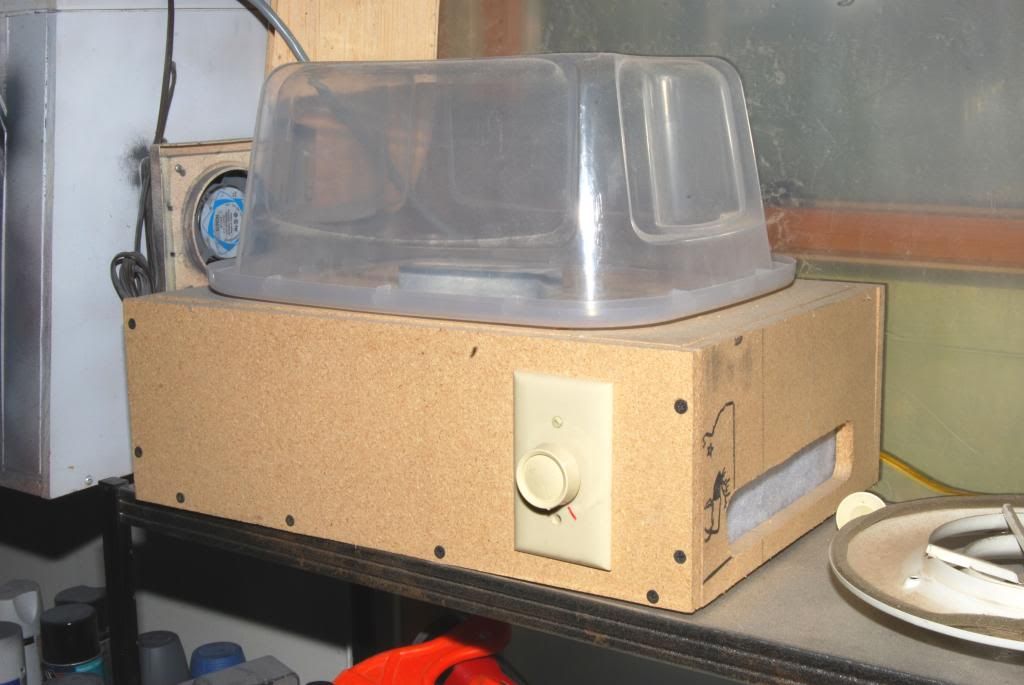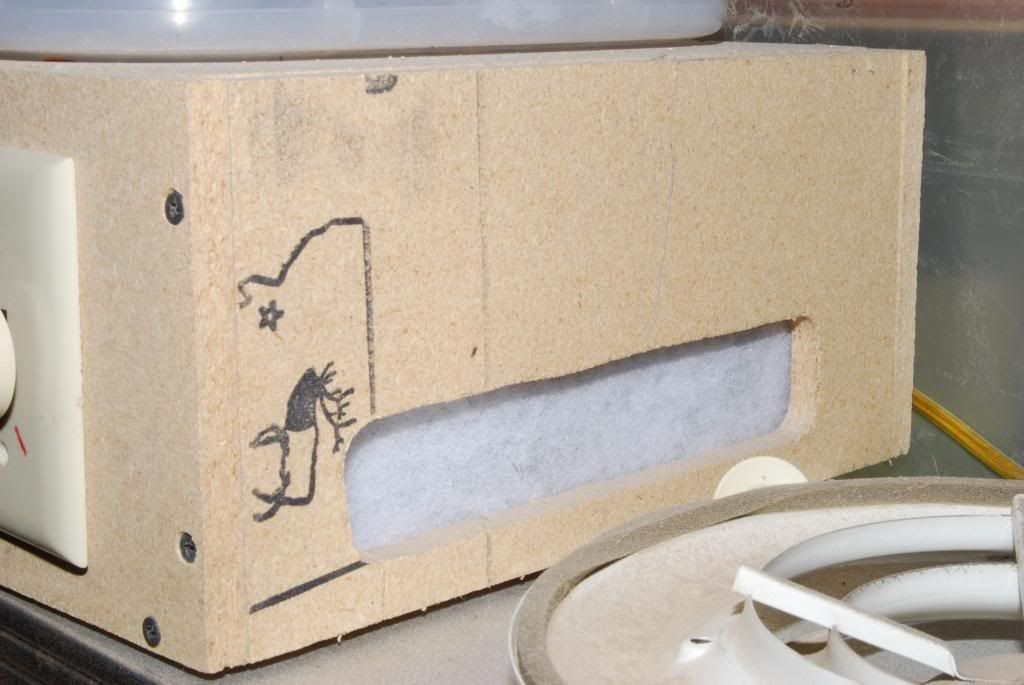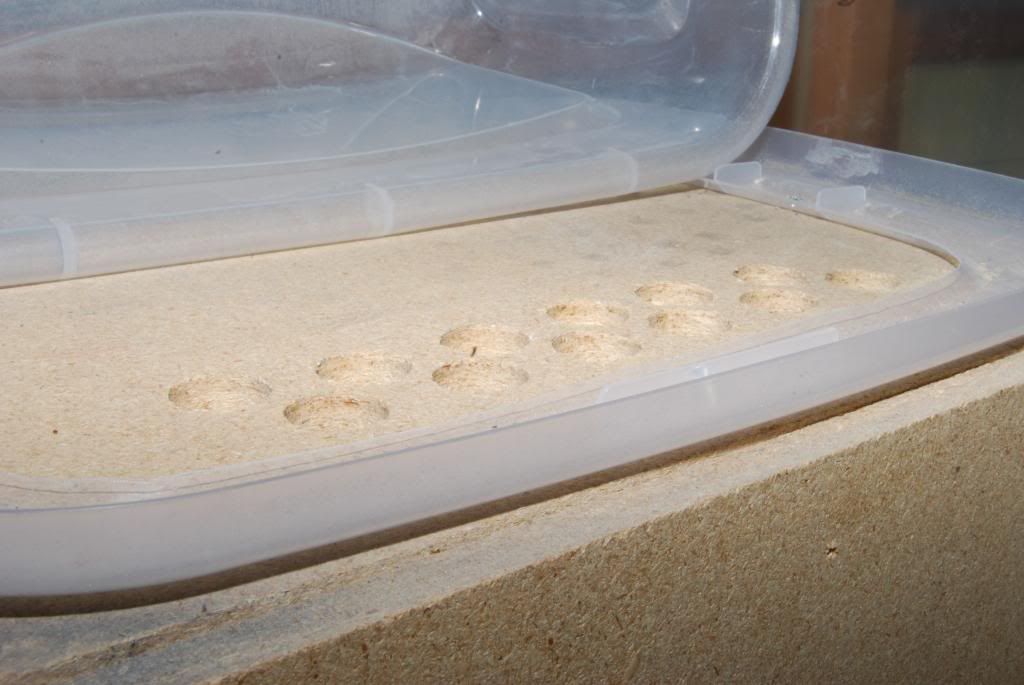I've had several questions about the dryer box that I built, so I thought I'd just take a couple of photos to explain it. I never completed drawings. I start to, then found I could complete the box by winging it. It is about 13 x 18 inches, sized to fit one of those plastic cases we take our models to shows in. The box is mounted upside down from the normal position, so the main part becomes a cover, and I only use the lid to hold the box in the right place.

This is an overall shot of the dryer.
This next shot shows the opening I cut in one end of the box, to allow air to circulate into t he box. The opening is covered with one of those cloth filters you buy to stick in your hot air registers to filter out dust. We don't want dust making its way into the top chamber.


This shows the upper chamber, and how the lid of the storage box has its center cut out to allow heated air to flow up from the lower chamber. Air flow is by convection- no fan needed. The holes cut in the top of the lower box allows warm air to rise into the upper chamber. Again, one of those register filters is taped underneath the holes. There is also a hole drilled in the top of the upper chamber (was the bottom of the storage box), which is also covered by a filter. The filters are to prevent dust from my workshop (it is pretty dusty) to get onto the drying model.
I have had a few questions about how the light bulb is mounted. It is mounted to one of those porcelin light bulb sockets, which just screws down to a surface. There are two screw contacts to attach electric wires to. I bought a lamp cord with plug attached, and ran it through a hole in end of box. The ends of this are attached to the socket. I seperated the wires, and cut one of them to hook it up to the switch/dimmer. I thought I would need a dimmer to get it to the right temperature, but that is not needed- with a 60 Watt light bulb it runs at 105F. That is just about what I was shooting for, so a simple wall switch could substitute for the dimmer with switch. I would not attempt this project if you are not familiar with electrical wiring, because a mistake in wiring can create a serious hazard, both shock and fire.